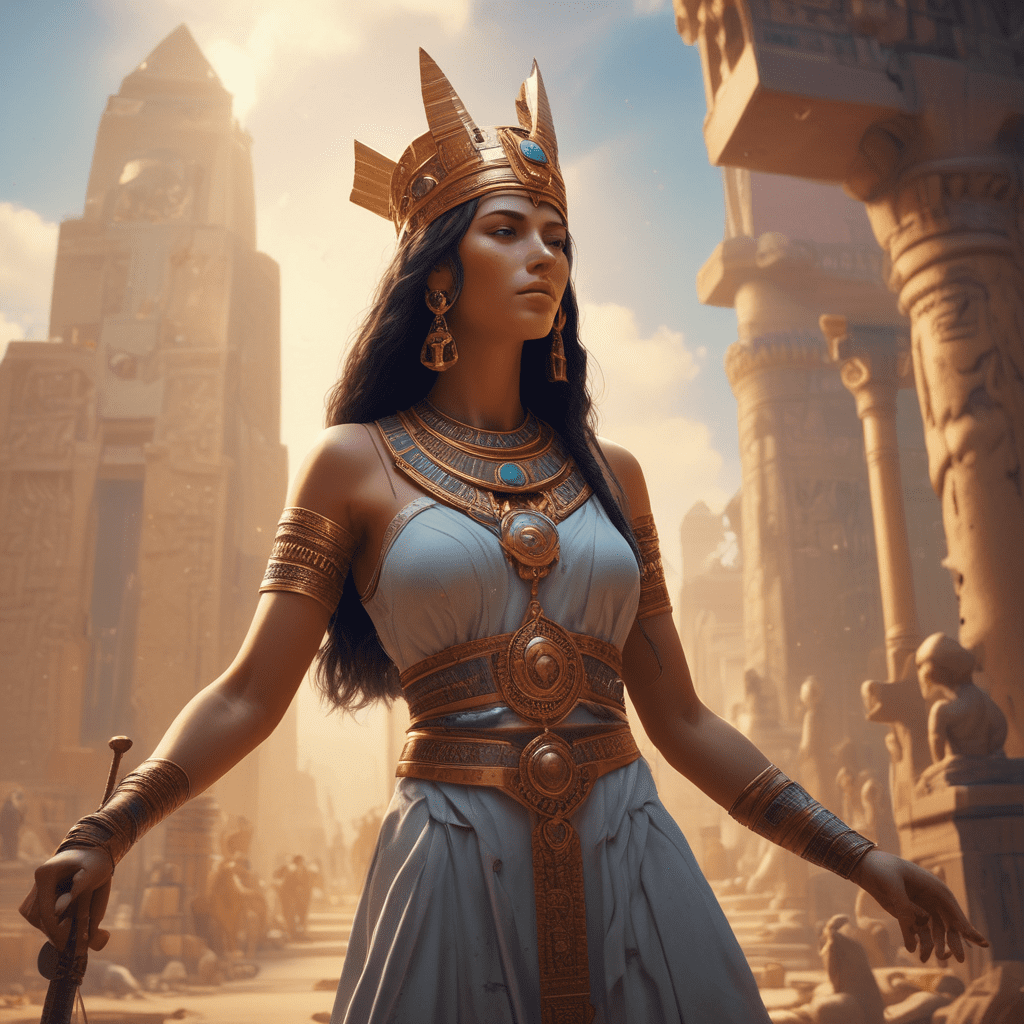From Chaos Comes Creation: The Most Captivating Myths
Introduction: The Intersection of Chaos and Creation
Throughout the ages, myths have served as a vital lens through which humanity understands its existence and the world around it. At the heart of many of these narratives lies a profound duality: chaos and creation. In mythological contexts, chaos often represents the primordial state of existence, a formless void from which all things arise. Creation, on the other hand, is the manifestation of order, beauty, and life from this initial disarray.
Myths are not merely fanciful stories; they encapsulate the human experience, reflecting our fears, hopes, and the quest for meaning. By exploring the dynamics of chaos and creation in various cultural myths, we can gain deeper insights into our own lives and the universal patterns of existence.
The Role of Chaos in Mythology
Chaos is frequently depicted as a primordial force in many mythological traditions. It signifies a state of non-being, where potential resides in the absence of form. The concept of chaos transcends cultural boundaries, appearing in diverse mythologies around the globe:
- Greek Mythology: Chaos is the first entity from which all things emerge.
- Norse Mythology: The primordial void, Ginnungagap, is the space from which the cosmos is created.
- Asian Mythology: Concepts like the Tao and cosmic eggs illustrate the balance of chaos and order.
In these narratives, chaos is not merely a destructive force; it is also a necessary precursor to creation, underscoring the interconnectedness of disorder and the emergence of life.
Creation Myths Across Cultures
Creation myths serve as foundational stories for cultures worldwide, offering insight into how different societies perceive the world and their place within it. Here are notable examples:
- Genesis (Judeo-Christian Tradition): The world is created in six days from chaos by God’s command.
- The Popol Vuh (Maya): The gods create humans from maize after several failed attempts.
- The Enuma Elish (Babylonian): The cosmos is formed from the body of the slain goddess Tiamat.
While these myths vary in their details, they share common themes of transformation, the struggle between order and chaos, and the emergence of life from an initial state of disarray.
The Greek Myth of Chaos and Cosmos
In Greek mythology, the concept of chaos is vividly illustrated in Hesiod’s “Theogony.” Here, chaos is depicted as the very first thing that existed—a gaping void. From this emptiness, several primordial deities emerge:
- Gaia: The Earth, nurturing and fertile.
- Tartarus: The abyss, a deep, dark pit.
- Eros: The force of attraction and love that brings order.
The emergence of these entities signifies the beginning of creation, where chaos gives birth to the cosmos, establishing a structured universe governed by divine forces.
Norse Creation: From Ginnungagap to Midgard
Norse mythology presents a fascinating narrative of creation that begins with Ginnungagap, the primordial void. In this void, heat from Muspelheim and cold from Niflheim converge, leading to the creation of Ymir, the first being. The subsequent events unfold as follows:
- Ymir’s body is used to create the world.
- His flesh becomes the land, his blood the seas, and his bones the mountains.
- The first humans, Ask and Embla, are created from trees.
This myth emphasizes the transformation of chaos into order, showcasing the cyclical nature of life and death in Norse belief systems.
Eastern Philosophies: The Tao and the Cosmic Egg
In Eastern philosophies, particularly in Taoism, chaos and order are viewed as complementary forces. The Tao represents the fundamental principle that underlies the universe, embodying both chaos and order. Another significant myth is that of Pangu, who emerged from a cosmic egg to create the world. His actions bring about:
- The separation of heaven and earth.
- The establishment of the natural order.
These narratives reflect a deep understanding of the balance between chaos and creation, illustrating a harmonious relationship between the two.
Indigenous Myths: Understanding Chaos in Nature
Many indigenous cultures possess rich creation narratives that emphasize the chaos inherent in nature. These myths often highlight the cyclical patterns of life, death, and rebirth. Common themes include:
- The interconnection of all living beings.
- The role of chaos in natural events, such as floods and fires, as necessary for renewal.
- Stories of trickster figures who embody chaos yet play crucial roles in creation.
Such narratives remind us of the significance of chaos as a transformative force in the natural world.
The Psychological Interpretation of Chaos and Creation
Carl Jung’s theories on myth propose that chaos is a source of transformation, reflecting the collective unconscious. He believed that chaos represents the unknown parts of ourselves, which, when confronted, can lead to personal growth and self-discovery. Myths serve as archetypal stories that help individuals navigate their inner chaos, providing guidance through:
- Symbols that resonate with personal experiences.
- Lessons on overcoming adversity.
Through this lens, chaos becomes a catalyst for creativity and renewal in our lives.
Modern Reinterpretations of Chaos and Creation
The themes of chaos and creation continue to resonate in contemporary literature and media. Modern storytelling often draws inspiration from ancient myths, adapting them for new contexts. Examples include:
- Films such as “Interstellar” and “The Matrix,” which explore the nature of reality and existence.
- Books like “American Gods” by Neil Gaiman, which weave mythological elements into modern narratives.
These reinterpretations highlight how ancient myths retain their relevance, providing frameworks for understanding the complexities of modern life.
Conclusion: Embracing Chaos as a Catalyst for Creation
The myths that explore chaos and creation reveal profound truths about the human experience. They remind us that chaos is not merely an obstacle to overcome but an essential part of the creative process. By embracing chaos, we open ourselves to new possibilities, innovation, and renewal.
As we reflect on these timeless narratives, we are encouraged to view chaos not as a threat, but as an opportunity for creativity and transformation, a reminder that from chaos comes the potential for creation.


